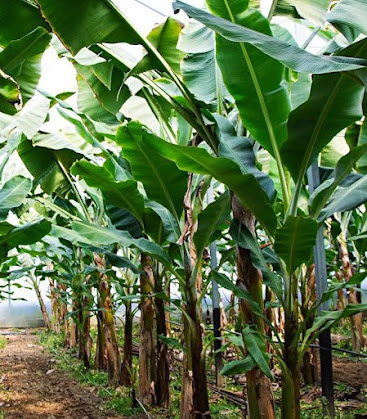Banana is a semi-perennial crop with a crop cycle nearly a year long under optimum conditions and even longer with lower temperatures or more erratic water supply.
Banana plants like warm and wet conditions also rainy climate year-round, along with fertile soils. Bananas need adequate moisture and protection from wind.
They grow best in the tropics, with an average temperature in the high 20s Celsius, and can be found in plantations in a wide band between 30° north and south of the equator.
Most varieties of bananas grow best with 12 hours of bright light and high humidity of 50% or higher. The ideal temperature range is around 26-30°C with RH regime of 75-85%.
Growth begins at 18ºC, reaches optimal growth at 27ºC and stop entirely when temperature reaches 38ºC.
Banana thrives in fertile, well-drained soils with high water-holding capacity. The optimal pH is between 5 and 7. Because banana is sensitive to salinity, the EC should not exceed 1.0 dS/ m.
Bananas are found in southern Europe, northern Africa, Pakistan, northern India and China at their northern extreme and in Argentina, Paraguay, South Africa and Australia at their southern extreme.
They are also grown in the tropics into mid-altitudes of higher than 1 500 meters above sea level in the Andes, Himalayas, Kilimanjaro and the East African Highlands.
Commercial plants are usually grown to just a few meters tall and are replanted every six years or so using the bulbous shallow-rooted rhizomes (called corms) that the adult plants produce.
Climate for banana cultivation
Allicin: The Key Bioactive Compound Behind Garlic’s Health Benefits
-
Allicin, a sulfur-containing compound derived from the amino acid alliin,
is one of the primary reasons garlic has earned its long-standing
reputation as b...





